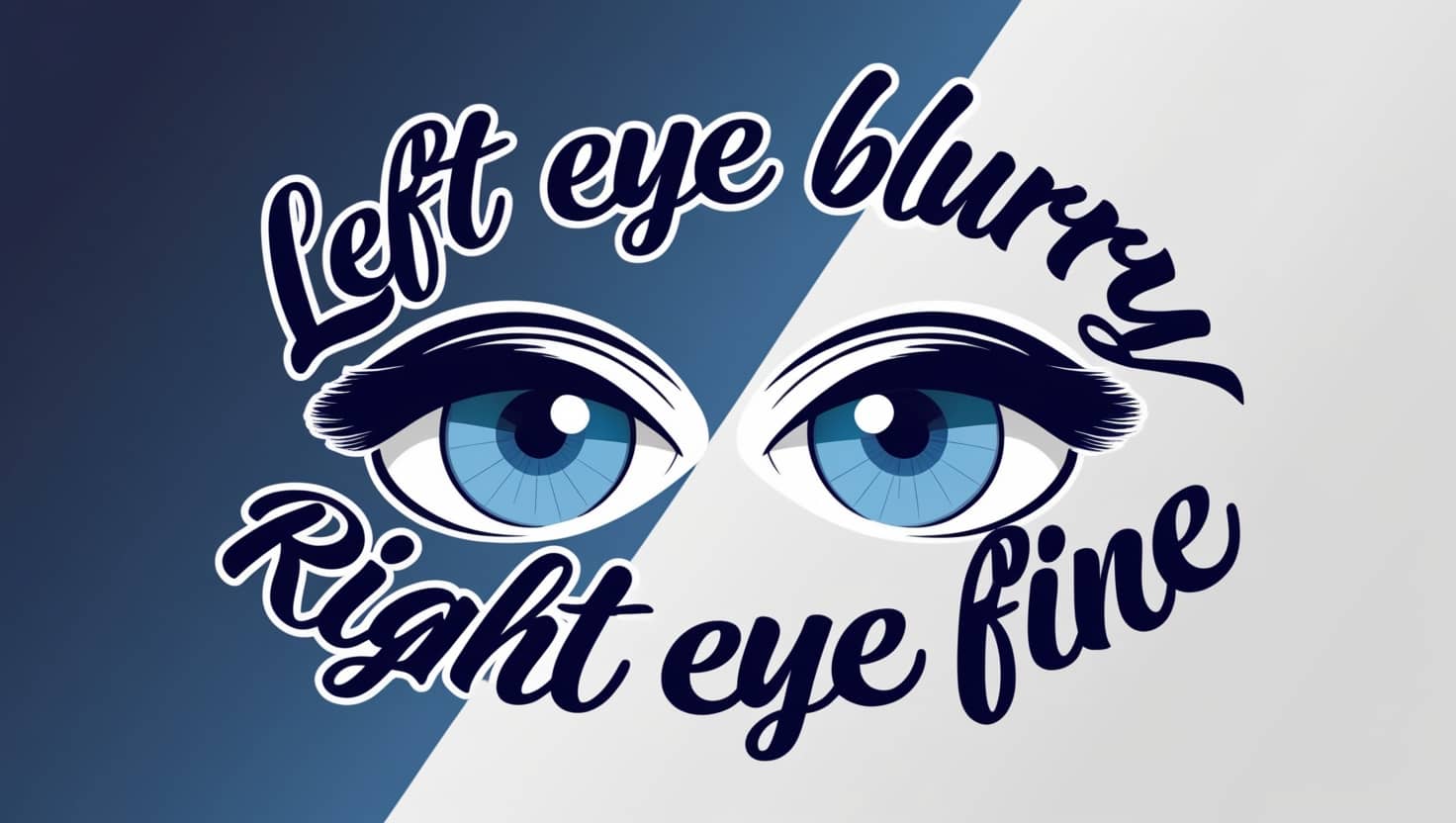Anisometropia is a disease characterized by refractive interocular asymmetry, typically indicating clinically substantial differences between the right and left eye (Left Eye Blurry, Right Eye Clear). Research conducted across many regions indicates that the prevalence of this disease varies between 3.79% and 21.8%. Diagnosis and treatment necessitate a multidisciplinary approach and regular examinations.
Causes of Blurry Vision in One Eye
- Disparities in vision between the eyes may arise from multiple sources, such as refractive errors, ocular diseases, eye traumas, and amblyopia.
- Prevalent reasons encompass myopia, hyperopia, astigmatism, cataracts, glaucoma, macular degeneration, and macular edema.
- Ocular injuries may potentially impact the visual acuity of one eye.
- Genetics may contribute; however, inherited factors alone cannot account for the condition.
- Amblyopia arises when one eye exhibits diminished vision due to insufficient visual stimulus.
Symptoms
- The severity of anisometropia varies, with certain patients exhibiting no symptoms.
- Typical symptoms encompass blurred vision, ocular fatigue, cephalalgia, and difficulties with depth perception.
- Asymmetrical vision may result in blurred vision and impaired ocular coordination.
- Eye strain and headaches frequently occur when one eye exerts greater effort to focus light.
- Anisometropia may also impair precise distance perception.
Diagnosis
This condition can be identified via a thorough ocular examination. During the examination, an ophthalmologist will assess the refractive power of each eye and evaluate any difference between them. They may also conduct assessments to evaluate the coordination of the eyes.
Treatment Overview
- A permanent disparity in refractive power between the eyes can be rectified.
- Treatment depends upon the severity, kind, age, and patient preference.
- Effective medical interventions comprise eyeglasses, contact lenses, laser refractive surgery, and intraocular lens implantation.
- Eyeglasses or contact lenses can enhance vision in the weaker eye and diminish gaps in visual acuity.
- Laser eye surgery can correct refractive errors and minimize the necessity for glasses or contact lenses.
- Intraocular lens implantation substitutes the natural lens of one or both eyes with an artificial lens. However, it is an invasive operation that may have undesirable effects.
Prevention & Prophylaxis
It is not always feasible to avoid discrepancies in refractive power between the eyes. Nonetheless, measures can be implemented to marginally diminish the likelihood of acquiring anisometropia, particularly in infants. These encompass:
- Schedule routine ocular examinations
- Restrict screen exposure and implement regular intervals for rest to prevent ocular strain and weariness.
- Wear eye protection during sports, the use of specialized instruments, or the operation of machinery to safeguard against ocular harm.
- Utilize enough light for the duties you are undertaking.
- Effective ocular hygiene practices
Severe Causes of Uneven Vision Between Eyes
- Stroke or Transient Ischemic Attack (TIA): A rupture or obstruction of a blood vessel in the brain may result in visual disturbances, such as abrupt blurriness in one or both eyes.
- Eye Stroke: An obstruction in an ocular artery results in abrupt impaired vision or vision loss in one eye.
- Acute Angle-Closure Glaucoma: An obstruction in the eye’s drainage angle results in a rapid elevation of intraocular pressure, potentially resulting in irreversible vision impairment.
- Additional symptoms encompass severe ocular pain or cephalalgia, visual impairment, conjunctival hyperemia, iridescent halos surrounding light sources, nausea, and emesis.
Summary
Contrary to popular belief, it is not uncommon for both eyes to have different refractive strengths. The majority of patients with anisometropia are able to successfully adapt to the diopter differences and get comfortable, clear vision with the right medical attention and therapy.
Read Also: Zig-Zag Lines in Vision With No Headache
References
- Gabai, A., & Zeppieri, M. (2023). Anisometropia. In StatPearls. StatPearls Publishing. Retrieved January 2025.
- Ostadimoghaddam, H., Fotouhi, A., Hashemi, H., Yekta, A. A., Heravian, J., Hemmati, B., Jafarzadehpur, E., Rezvan, F., & Khabazkhoob, M. (2012). The prevalence of anisometropia in a population-based study. Strabismus, 20(4), 152–157.


